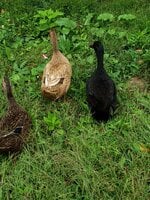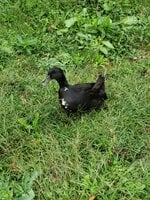AppMtnChickens
Songster
- Sep 19, 2019
- 50
- 70
- 111
Hi! Im new here but excited to explore!
I recently bought a hybrid golden 300 hen, and a black swedish hen (i think) so my current rouen hen could have some companions. I got my rouen from my girlfriend, whos dog killed the others.
After doing some research im not 100% shes a full black swedish due to the lack of a white chest.
I recently bought a hybrid golden 300 hen, and a black swedish hen (i think) so my current rouen hen could have some companions. I got my rouen from my girlfriend, whos dog killed the others.
After doing some research im not 100% shes a full black swedish due to the lack of a white chest.





